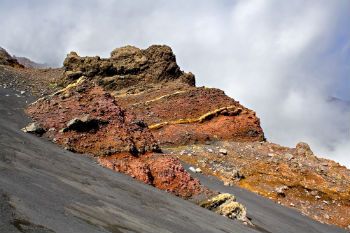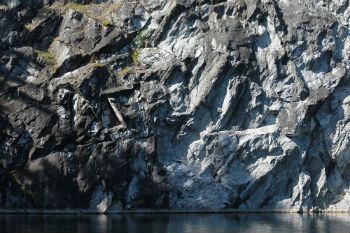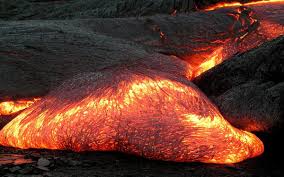The three types of rock that exist are: magmatic rocks, sedimentary rocks and metamorphic rocks .
Remember that rock is a natural aggregate formed by one or more minerals. Its formation process is continuous and the first rocks appeared after the formation and cooling of the Earth.
Throughout the Earth’s geological history, rocks form and change constantly. Old rocks are transformed into new rocks. It is called the “rock cycle”.
Origin and classification of rocks
In the Primitive or Precambrian Era, the Earth should be a single incandescent mass, with very high temperatures, without solid matter.
Minerals were a pasty mass, similar to magma. When the Earth started the cooling process, many minerals solidified and formed the first rocks on the planet – the magmatic rocks .
The gases and vapors that escaped the cooling of the minerals gave rise to the layer of air that surrounds the Earth: the atmosphere.
With the formation of rains, rivers and oceans, acting as erosion agents , new forms of relief were formed.
The debris resulting from the erosion of the primitive rocks was deposited, layer by layer, in the depressions, giving rise to sedimentary rocks .
Under the conditions of temperature and pressure, the magmatic and sedimentary rocks gave rise to the metamorphic rocks .
Magmatic Rocks

The magmatic rocks , also called igneous are formed by cooling and solidifying the pasty magma. The magma that exists inside the earth is expelled by volcanic eruptions.
The solidification of magma occurs in two ways: on the surface and inside the Earth.
The magma that reaches the surface and undergoes rapid cooling allows small crystals to form in its composition, not visible to the naked eye. Are called rocks magmatic volcanic or extrusive .
Cooling inside the earth form the rocks magmatic plutonic or intrusive . In this case, the cooling of the magma is slow, allowing the formation of large crystals, visible to the naked eye. They are also called crystalline rocks .
Are examples of magmatic rocks:
- The basalt , which is the type of magmatic rock more common. It is used as a cobblestone for paving streets;
- The granite , polished which is used for coating floors, walls and kitchens and bathrooms sink top. Without polishing it is used as street paving;
- The diorite , whose purpose is especially to make crushed stone for road construction.
Sedimentary Rocks

The sedimentary rocks result from the deposition of debris rocks or other organic matter in the earth ‘s relief depressions.
The action of rains, winds, rivers, seas and glaciers on the relief, wears away the rocks of the earth’s surface.
These processes form debris that are transported to the lower parts of the relief, the seas, lakes and rivers.
In the process of formation of sedimentary rocks, debris accumulates and consolidates in layers of strata.
Sedimentary rocks are also called stratified rocks , as they are presented in layers of sediments.
The formation of oil originated from the deposition of microorganisms in sedimentary basins . These can exist on both the continents and the oceans.
The deposition of sediments also occurs through chemical processes, such as stalactites and stalagmites in limestone caves.
Stalactites are shapes that hang from the ceiling and stalagmites come from drops of water that accumulate on the floor. Both are formed by sodium bicarbonate dissolved in water.
Are examples of sedimentary rocks:
- The sandstone , which is used in the manufacture of glass;
- The clay which is used in the manufacture of bricks and tiles;
- The coal mineral , which is used as fuel.
Metamorphic Rocks

The metamorphic rocks have their origin in the transformation of other rocks (igneous and sedimentary), when subjected to certain conditions of humidity, heat and pressure inside the earth.
The transformed rock acquires new characteristics and has its composition changed.
Are examples of metamorphic rocks:
- The marble , which is widely used in construction and the creation of monuments;
- The quartzite used for ornamental purposes, is a rock like marble, but more durable.
- The gneiss , and is used in the ornamentation is also used in construction.

